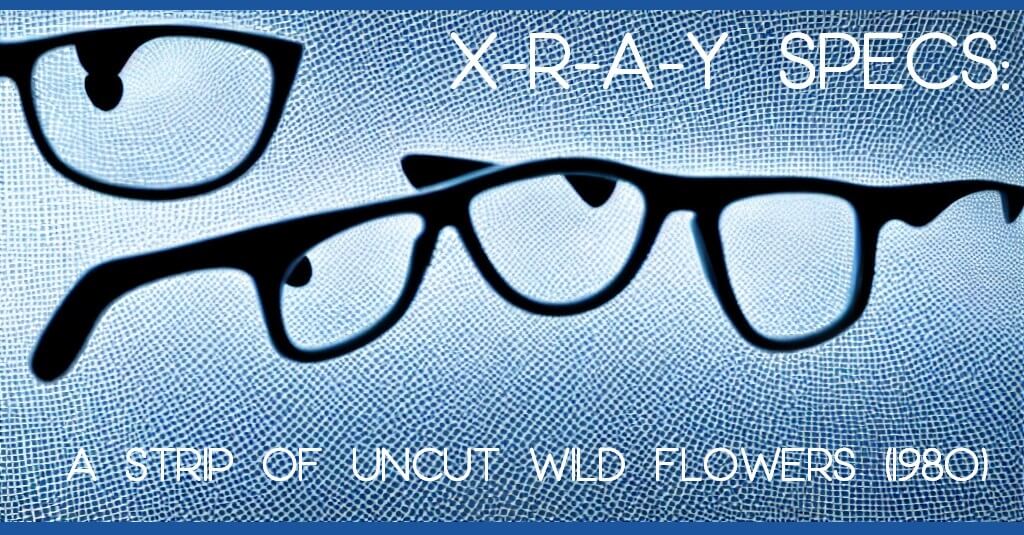Welcome to X-R-A-Y Specs, a film roundtable in which four of our radiological technicians converse about movies. This edition’s selection is A Strip of Uncut Wild Flowers, a Soviet film from Ukrainian filmmaker Yuri Ilyenko, made in 1980. Our conversation follows.

(An editorial note: late in his life, Yuri Ilyenko turned toward far-right nationalism. As should be clear below, our writers are not familiar enough with the politics of Soviet and post-Soviet Ukraine for this roundtable to offer any kind of declarative statement about the region, past or present. Nothing we have to say here is intended as either endorsement of Ilyenko’s politics or insult to his memory.)
Rebecca Gransden: I find this film captivating every time I see it. The story is a simple one, of a spirited yet unruly boy pushing against a society determined to constrain him. We’ve talked about universality before for this column, and there is no more common an experience than childhood and its growing pains. The film’s director, Yuri Ilyenko, takes these familiar themes and creates something unique with this film.
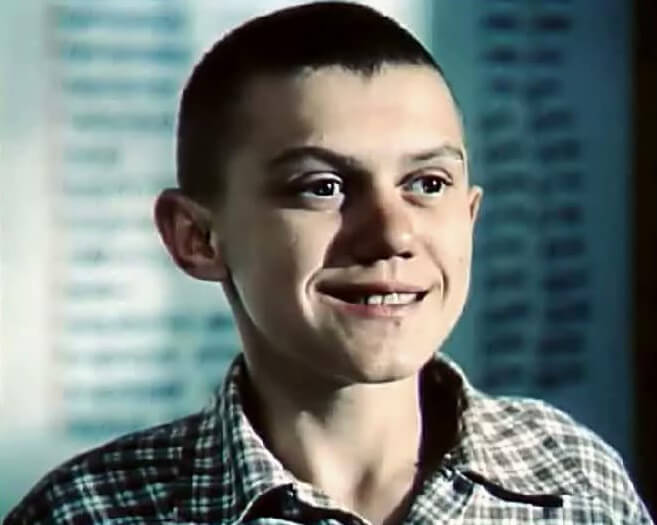 As the film’s protagonist, Porfiry, faces forced attendance at a boy’s school for troubled youth, we are shown the world chiefly from his perspective. The imaginative life of children is often misused by cinema, subject to a sentimentalized portrayal that ultimately belittles the experience of growing up. Ilyenko manages to capture the rawness of childhood, and the potent intersection of imagination and real life. Porfiry’s lived experience is one where fantasy is enmeshed with actuality, and the film’s great strength is to honor that, at times in ways that touch on the sublime.
As the film’s protagonist, Porfiry, faces forced attendance at a boy’s school for troubled youth, we are shown the world chiefly from his perspective. The imaginative life of children is often misused by cinema, subject to a sentimentalized portrayal that ultimately belittles the experience of growing up. Ilyenko manages to capture the rawness of childhood, and the potent intersection of imagination and real life. Porfiry’s lived experience is one where fantasy is enmeshed with actuality, and the film’s great strength is to honor that, at times in ways that touch on the sublime.
Katharine Coldiron: That’s all true, but I felt I was missing so much context that would make this film resonate more. It’s set in Soviet-era Ukraine, at a “special school” for boys, all of whom seem to have parents who love and miss them. Is the state forcing the boys to be at the school, against the parents’ wishes? Why?
I could tell there was a binary set up between the wild (the river/sea, the boys’ natural behavior, the chaos that sets in at the school fair when it rains) and the orderly (the one mean schoolmaster, the farmers with their scythes cutting down wildflowers), but I felt there was a lot more under the surface of that binary that I wasn’t getting. This is always a risk when watching films made in, by, and for another culture, but it needled me particularly with this film.
Jillian Luft: Oh, this one really resonated with me. Even though I agree with Katharine—I felt like some crucial context was missing. But I was able to enjoy its rather universal and allegorical themes just the same. As someone who works with children of this age and attempts to devise ways for them to be heard and seen and valued (my day job that I rarely speak of, ha), I thought Ilyenko did a deft job of treating his protagonist with dignity while not creating a whimsical and precious caricature of him, re: Beasts of the Southern Wild, George Washington, etc. I like those movies, but they, ultimately, ring false. Stories about children’s lives can be fantastical while remaining tethered to the brutality of the worlds we live in. Rebecca got at this already, but I think it’s what’s most wonderful about this film.
Also, Ilyenko’s portrayal of Porfiry’s escapist fantasies are not cinematic fairy dust or run-of-the-mill magic. They are grounded in his schema, his particular associations of freedom and comfort (his mother, boat rides) and the very real barriers to that freedom (the schoolmaster). The scene where his boat glides by all the people he’s loved and some imagined folks like the band and the other schoolboys cheering transforms the wild and natural environs into something approaching the mystical just through camerawork and blocking alone.
Also, I find the social worker/teacher? character quite interesting. At one point, she remarks, “It’s the 20th century and we’re still chasing people…hunting them.” This came across as integral to understanding the film. The idea of chasing people into submission, trying to tame them as they run for their lives. Both the futility and cruelty of it.
Tex Gresham: I’ve been having trouble parsing my thoughts for this one. But Jillian, you give me a good jumping-off point because I too found that moment with the social worker lady interesting. It’s like a key to the film. For me, it felt like a cipher to the heart of the film (maybe?). A message that might relate to the context of the world surrounding the film at the time—though I don’t really care about context—but really is a message that feels eternally relatable. Not really about taming, but rather about suppressing the free thinkers, those who see the world like dreamers and are willing to translate it as such. And the State, those who live with their dreams suppressed, run off of fear and therefore threaten or act with cruel intentions. The State exists as those who are convinced they are correct—and make sure that everyone around them knows that what they believe is right and true. A very alienating film for me.
But outside of this, the film felt very chaotic. I don’t know if it was the quality of the version I watched, or the combination of cinematography and editing, but it felt like the film never gave me an opportunity to hold it—or maybe it never had an interest in holding me. Like it was always on the run from me. And I’m not speaking metaphorically.
RG: I’ve no doubt there are political and societal allusions that go over my head, but that doesn’t hamper my appreciation here, especially as many films that come out of former Soviet Republics and satellite states use various approaches to address authoritarianism, most times out of necessity, and at others in line with a shared inherited cinematic language. There is a compelling complexity at the heart of this film when it comes to just what it is saying about liberty and control—as you’ve all picked up on—which I’m still trying to get to grips with after several watches. The main authority figure at the school is dressed like a guard, a representation of the state, and that certainly seems to be his role. The tension between his disciplinarian approach and the more progressive attitude of the head and the sympathetic teacher suggests not only the uncomfortable meeting of differing ideologies, but also the old way encountering a new way. For me, the obliqueness demonstrates the arbitrary manner in which control is administered under a system like this. The film also comes from Porfiry’s perspective, so the somewhat ambiguous nature of the school and its purpose can be seen as apt in that context, as, although he’s obviously a smart and savvy kid, his world is a subjective one, a world only concerned with his immediate experience of it.
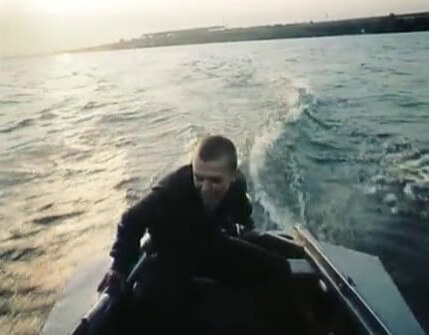 Porfiry aligns himself with the elements from early on, explicitly stating that he is the wind, and throughout the film he’s constantly seeking out motion. He declares himself protector of the birds and the fish, and makes frequent reference to poachers as his enemies. The film opens with images of seagulls in flight, coastal birds tied to the open water, and boats are the method of transport Porfiry gravitates towards for all his attempts at freedom. Land-based vehicles seem to represent restraint, such as the car that delivers him to the school, and the bus waiting for him after his rampage around a moored boat. The boat sequence Jillian mentions, where Porfiry takes a small boat out onto a lake, is a good example of the way the film luxuriates in its scenes. This scene is accompanied by a music track, and unfolds in an unhurried manner, irrespective of Porfiry’s antics. In this way, the film reaches for a means to translate Porfiry’s drive toward pure experience in the moment to the audience. A scene early in the film sees Porfiry instructed by the guard character to paint over the image of a boat that has been etched onto the brick of a wall in the boy’s room, presumably put there by the room’s former troubled occupant. In response to this Porfiry’s fantasy world summons the wind to blow through the walls. For me, the fantasy elements embraced by this film are some of the most successful I’ve seen when it comes to the imaginative reality of childhood.
Porfiry aligns himself with the elements from early on, explicitly stating that he is the wind, and throughout the film he’s constantly seeking out motion. He declares himself protector of the birds and the fish, and makes frequent reference to poachers as his enemies. The film opens with images of seagulls in flight, coastal birds tied to the open water, and boats are the method of transport Porfiry gravitates towards for all his attempts at freedom. Land-based vehicles seem to represent restraint, such as the car that delivers him to the school, and the bus waiting for him after his rampage around a moored boat. The boat sequence Jillian mentions, where Porfiry takes a small boat out onto a lake, is a good example of the way the film luxuriates in its scenes. This scene is accompanied by a music track, and unfolds in an unhurried manner, irrespective of Porfiry’s antics. In this way, the film reaches for a means to translate Porfiry’s drive toward pure experience in the moment to the audience. A scene early in the film sees Porfiry instructed by the guard character to paint over the image of a boat that has been etched onto the brick of a wall in the boy’s room, presumably put there by the room’s former troubled occupant. In response to this Porfiry’s fantasy world summons the wind to blow through the walls. For me, the fantasy elements embraced by this film are some of the most successful I’ve seen when it comes to the imaginative reality of childhood.
I find the character of the head of the school particularly interesting, and he is central to one of the scenes I view as most compelling. At one point in the film it is made clear that Porfiry’s fellow pupil has a strained relationship with his father. When this boy’s father makes an unannounced visit the man is taken to the head’s office. Here he unburdens his reasons for wanting to see his son to the head, while the head listens on, in near silence, until near the end. What is so fascinating about this scene is Ilyenko’s direction choice, as the camera stays on the head throughout, and we never view the father’s face. The father’s selfishness and ignorance is left to speak for itself, and the frustration of the head is conveyed in a profound and understated manner. In the end, the head speaks plainly with the father, insisting that his unscheduled visit is damaging to his son, whatever his intentions. The incident is further complicated by the revelation later in the film that the boy’s father has been killed in an accident. So, in refusing this visit, the head has prevented the last chance the boy would ever have to spend time with his father. The weight of his position, and his more progressive tendencies, give his character depth, especially considering he has relatively scant screen time.
In a talk with the social worker/teacher, after an escaped Porfiry is brought back to the school, he is the one to express fear should they ever break Porfiry, that it would be awful if the boy should never try to break free again. At the end of the film, when the two boys return of their own volition, the camera lingers on the head’s face, and his expression is one I’m still trying to work out.
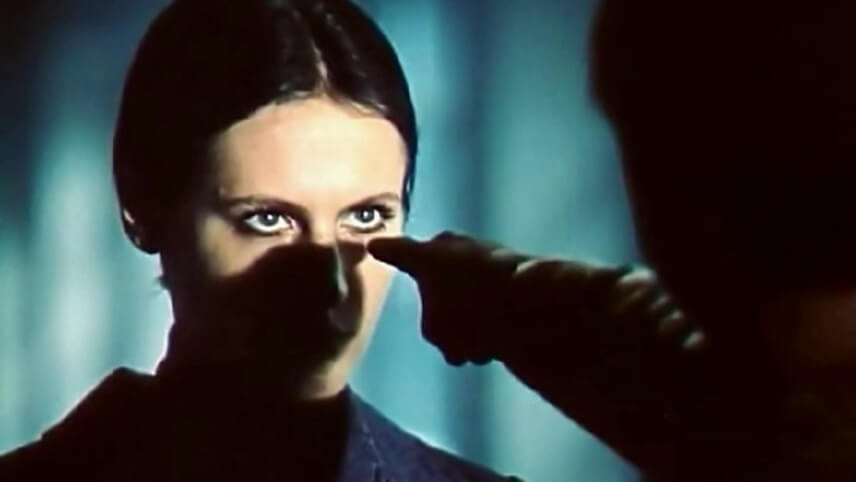 KC: I’m with Tex—I did feel like the film was uninterested in me as a viewer, slipping away every time I tried to feel genuinely involved in it. I’ve often felt that way about celebrated French New Wave films, and sometimes ascribed it to how strongly the male gaze informs those films. This film reminded me of The 400 Blows, which also meanders around after a preteen boy, and which I also felt shut out of. Maybe I’d have to have been a preteen boy to feel what that film was trying to get me to feel. This one seemed deliberately to begin and then withhold, to hesitate rather than expressing.
KC: I’m with Tex—I did feel like the film was uninterested in me as a viewer, slipping away every time I tried to feel genuinely involved in it. I’ve often felt that way about celebrated French New Wave films, and sometimes ascribed it to how strongly the male gaze informs those films. This film reminded me of The 400 Blows, which also meanders around after a preteen boy, and which I also felt shut out of. Maybe I’d have to have been a preteen boy to feel what that film was trying to get me to feel. This one seemed deliberately to begin and then withhold, to hesitate rather than expressing.
The only time I felt genuinely connected to the film was the sequence on some kind of showcase/visiting day, where the camera moves all around the facility, taking everything in without cutting. I enjoyed that because I could interpret it cinematically, because I found alignment in the bravura technical choices and the content I was seeing. The weirdly underdressed children on stage, and the detail of the mother saying it was no big deal that her young son smoked cigarettes, stuck with me.
Rebecca, I liked that scene with the head. When I was a young, stupid film student, I had the idea to make a film about conversations that only showed reaction shots, never the shots of people speaking. Ooh, edgy. Of course My Dinner with Andre and Jarmusch and other filmmakers have worked with this idea since before I was born. But I think that scene with the head did it in just the way I was thinking about when I “came up with” this idea. It reminded us who the main characters of this film were and who the unimportant ones were, and implanted the idea that one person’s reactions were more significant than another’s actions. Very appropriate for a nation of people rendered helpless by a distant, ineffective government. Almost like children stuck in an orphanage.
RG: The film does operate at its own register, and I can see how for some that can be distancing. I didn’t find that at all, and was completely swept away by it on a first watch. As is common for me, although not a strict habit, I knew nothing about the director going in, hence any political overtones were a secondary consideration, and that is certainly not why I’ve selected it to take a close look at now for this column. Coming at it from an artist’s perspective, the disjointed quality the film possesses is part of what grabs me. Porfiry strikes me as a character representative of the struggle between free-spiritedness and social duty that all children face, and widening out to the adult attempt at reconciliation between liberty and responsibility we all must come to terms with.
When it comes to art, the male gaze is only an issue for me if it results in uninspired or lazy work, and the quality of alienation that has been spoken of can be interesting and of value in itself, but I know that’s not what is being implied as relevant in this case. For me, I recognize much on a human level in Porfiry, and I see many of his traits, such as irrepressibility and unmanageability, in kids, now adults, I’ve known, both male and female, that have grown up in the care system.
For Porfiry’s mother the separation from her son is one that causes her much agony. The reason for his detention at the boy’s school is somewhat unclear, apart from his tendency to misbehave. I’m not certain to what degree single parenthood would have been stigmatized at the time this film is set, but I assumed this would be a factor. One of the most engaging scenes is when, on one of Porfiry’s many escapes, he visits his mother, and instead of fear of reprisals from the school authorities, she is filled with joy at his return. I suppose this can be viewed in two ways: either she is part of the problem, undermining rules, and so Porfiry learns his disobedience from her, or that those under unfair systems take their joys where they can. This scene also includes a clue to Porfiry’s troubles, as when he asks her about his absent father she avoids giving him the whole truth, too pained about the subject to address it with him.
The manner in which the other parents are portrayed is of note also. Most are presented as well-meaning but irresponsible, such as the mother with cigarettes you mention, Katharine. A father is shown turning up drunk to the school open day, turned away at the gate. It’s tempting to see this as a symptom of a dysfunctional society, but that could be my projection.
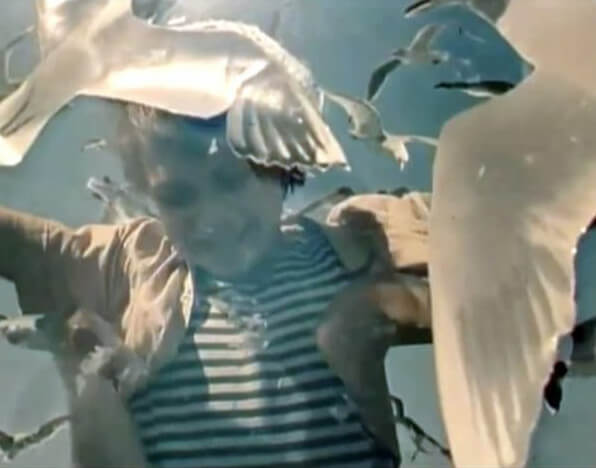 JL: Wow, okay. I’m finding it so interesting that half of us felt a remove from the film and the other half felt instantly welcomed, primarily because of our extended glimpses of Porfiry’s worldview. I also attribute my easy embrace of this film to my ongoing work with “troubled,” “challenged,” or “at-risk” youth. All of these qualifiers are polite euphemisms for children marginalized, neglected and consistently fucked over by the systems meant to serve them. And I think this movie sheds light on that in a rather profound way that never feels preachy or glib.
JL: Wow, okay. I’m finding it so interesting that half of us felt a remove from the film and the other half felt instantly welcomed, primarily because of our extended glimpses of Porfiry’s worldview. I also attribute my easy embrace of this film to my ongoing work with “troubled,” “challenged,” or “at-risk” youth. All of these qualifiers are polite euphemisms for children marginalized, neglected and consistently fucked over by the systems meant to serve them. And I think this movie sheds light on that in a rather profound way that never feels preachy or glib.
And when thinking about the head’s expression at the end, I saw a man conflicted, torn between his innate faith in the powers of youthful imagination and the escape from societal oppression it can afford and his dwindling faith in the institutions meant to support these children but only end up stifling what’s most precious about them. It’s heartbreaking. It’s a loss of innocence so profound and complete. It can never be recovered.
I had a slightly different read on the portrayal of the parents. I saw them as victims of the system at play, as Rebecca did, who are trying to liberate themselves in minor albeit “flawed” ways, e.g., the cigarettes, the drunk father, etc. They’re trying to unearth what’s wild and free within them, but their vices, or parental ineptitudes, only serve to further confine them.
And so, the film leaves me wondering: Is there a way to break free with one’s dignity intact?
Or does the system win out? Who can dance freely in the rain or give the reins to their imagination on uncharted waters? And at what cost?
A Strip of Uncut Wild Flowers is available on YouTube.

